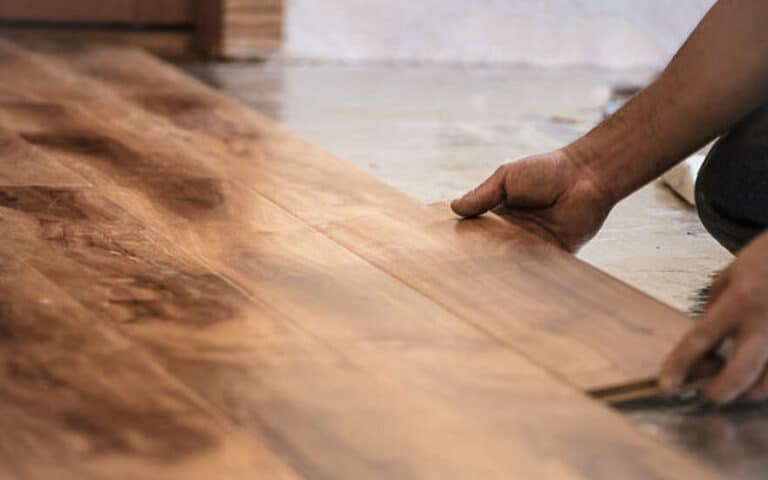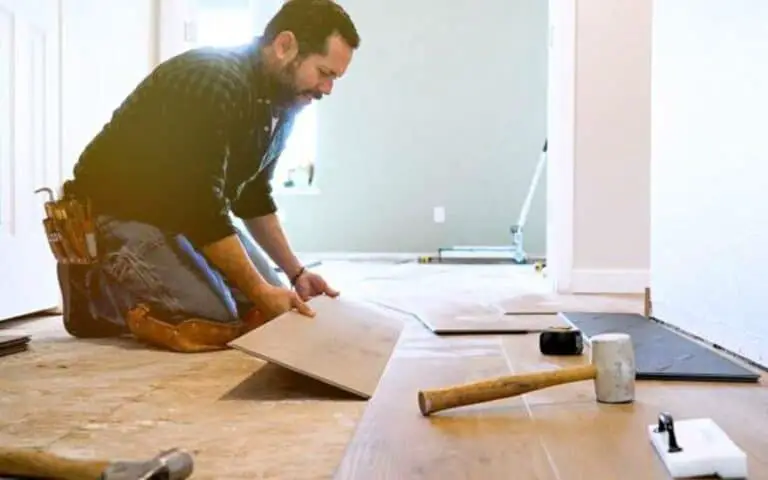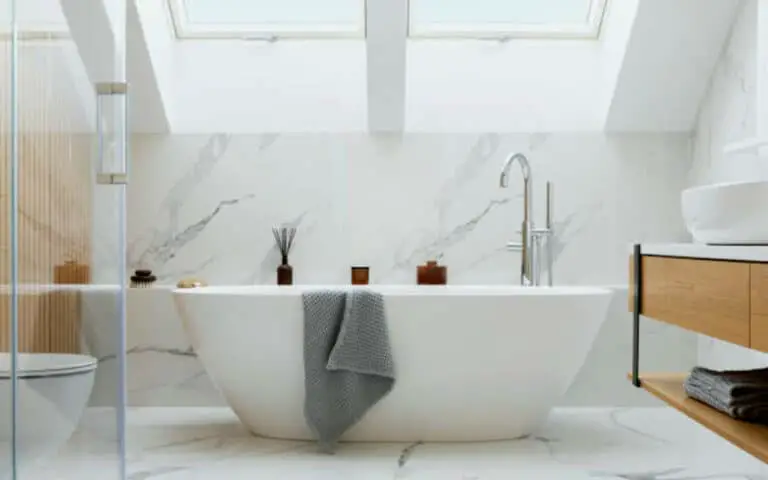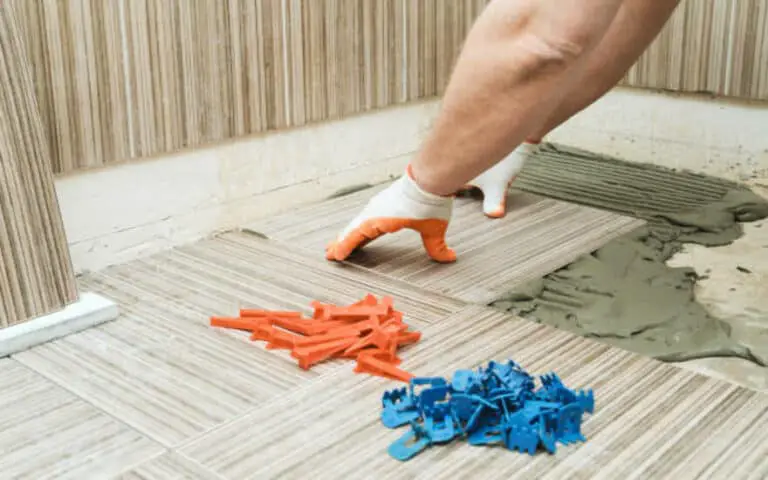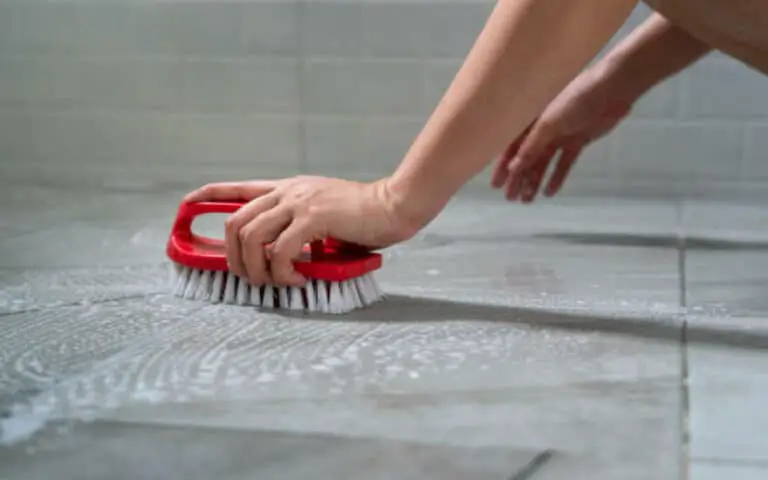If so, you’ve come to the right place. In this blog post, I’ll be exploring how humidity levels can affect different types of flooring and how you can ensure that your bathroom is well-protected.
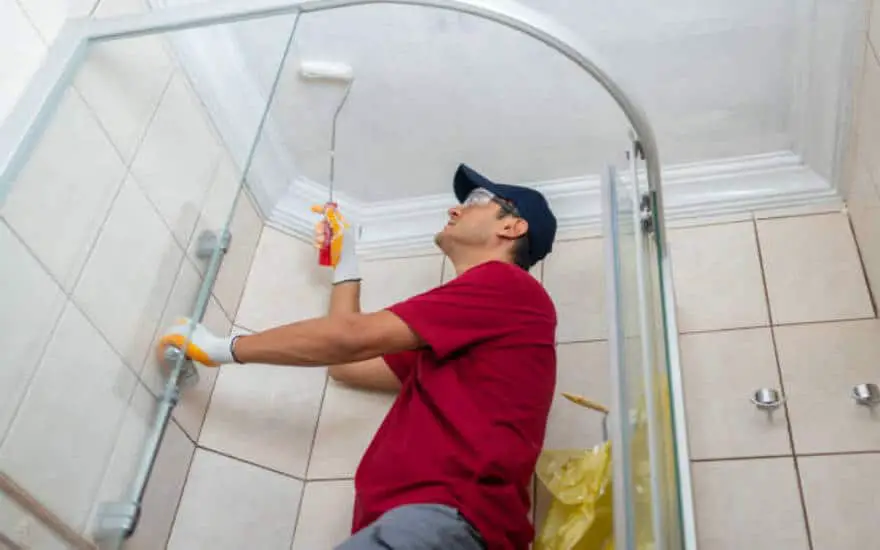
The impact of humidity on bathroom flooring
When it comes to bathroom flooring, humidity can cause a variety of issues. From buckling and swelling to cupping and crowning, the high moisture levels can wreak havoc on your flooring.
In some cases, the humidity can even affect the performance of the finish on your floor and cause the expansion of boards. Not to mention, if left unchecked, the moisture can damage your subfloor and lead to the shrinking of floor planks.
1. Buckling
Humidity and moisture in the air can seriously impact bathroom flooring, especially when it comes to hardwood.
One of the most common issues is buckling, which happens when moisture causes the wood floor to expand until it moves away from the subfloor. The expanding boards then push into each other and eventually cause peaks at the seams, known as buckling – this can also lead to irreversible cracking.
Water, and moisture, in general, are the number one cause of buckling floorboards. That’s because when these floorboards get wet, the wood absorbs the water and swells, leading to buckling.
When the humidity underneath your home is higher than when your floors were installed, it can cause expansion and buckling. When floors are subjected to rapid changes in temperature or moisture, it can also lead to buckling.
2. Swelling
Regarding the impact of humidity on bathroom flooring, swelling is yet another problem to look out for.
As the humidity rises, hardwood floors can experience swelling as they absorb moisture. If not contained or prevented, swelling can cause boards to expand and may even lead to cupping, which means that the edges of the planks are higher than the center.
This can cause several issues, such as warping, discoloration, and even cracking. Furthermore, humidity can also adversely affect laminate floors, as moisture may seep into the floorboards and cause them to swell.
As the humidity levels rise above 60%, your flooring expands. This expansion can cause boards to come loose from their tongue-in-groove installation and create gaps between them.
3. Cupping and Crowning
Although buckling and swelling can be caused by humidity, two other effects are generally more common in bathrooms – cupping and crowning.
Cupping is when the edges of hardwood flooring rise higher than the middle. This may cause noticeable ridges along the seams, while crowning is the opposite effect when the middle is higher than the edges.
These effects happen because of a moisture imbalance between the underside and surface of the boards.
When moisture interacts with a hardwood floor, the side of the boards closest to the moisture expands, resulting in cupping, while crowning occurs when dry air causes the wood to shrink and pull away from moisture.
4. Finishing Performance
High humidity can be a major problem when it comes to finishing performance. High humidity means that the water in the finish has nowhere to evaporate, leading to excessive scuffing and black marking from traffic until the finish dries hard.
Poor detergent and water resistance are also common issues with high humidity and buckling of the flooring. This is especially true for engineered wood flooring, which is more sensitive to changes in humidity than solid wood.
To prevent any of these issues from occurring, it’s important to keep humidity levels in check.
5. Expansion of Boards
When the humidity underneath your home is higher than when your floors were installed, it can cause expansion and buckling.
Wood flooring can cause the boards to push against each other, resulting in cracking or cupping. This is especially true in areas of the home where moisture is high, such as bathrooms. High humidity can also cause the boards to swell, making them difficult to install.
And if not taken care of properly, it can even cause damage to the subfloor beneath the boards.
6. Damage to Subfloor
When it comes to subfloor damage, you want to take every precaution possible. Installing a moisture barrier is a must when installing hardwood in any room, especially in bathrooms.
This will help keep the subfloor dry and protect it from any potential damage that high humidity can cause.
It’s also important to ensure the subfloor is properly sealed before installation, as this can help prevent moisture from seeping in.
Regarding subfloor damage, it’s important to understand the impact humidity has on it. High humidity levels can cause wood subflooring to swell, become soft, and even rot.
This can lead to warping, cupping, or buckling of your flooring.
If the humidity is too high, it can also cause mold or mildew growth, which could compromise the integrity of your flooring and potentially lead to costly repairs or replacements.
7. Shrinking of Planks
One of the most common issues caused by humidity is shrinking the planks in hardwood floors. Wood fibers release some moisture when the air is dry, causing the planks to shrink.
This can create gaps between the planks, making them difficult to walk on and potentially damaging your flooring.
On the other hand, when the air is humid, the wood will absorb more moisture and swell. W, wide plank floors are especially susceptible to changes from humidity fluctuations because larger widths contribute to less stability in the wood.
Therefore, keeping a consistent humidity level in your bathroom if you have a hardwood floor is important.
8. Impact of Low Humidity
Low humidity can also have a significant effect on bathroom flooring. As humidity levels drop, hardwood floors can shrink and pull each plank away from the other.
This can create noticeable gaps between planks and can also damage the subfloor. In addition, low humidity can decrease the moisture in wood floors, causing them to become brittle and prone to cracking or splintering.
It is also important to note that rapid changes in temperature or moisture levels can hurt the quality of bathroom flooring, particularly when it comes to laminate flooring.
9. Rapid Changes in Temperature or Moisture
Temperature and humidity also go hand-in-hand, as a decrease in temperature leads to a contraction, while an increase leads to expansion.
Rapid changes in temperature or moisture can be detrimental to your bathroom flooring, as large fluctuations will cause engineered floors to break down like with wood. Furthermore, high humidity creates excess moisture and condensation in the air, which may result in mold growth or rot.
On the other hand, low humidity can cause the rapid spread of shrinkage cracks in your flooring.
It’s important to be aware of your building environment and how it could affect your bathroom flooring.
10. Absorbing Ceramic Tiles
Ceramic tiles can be a great choice for bathroom flooring, as they are not only easy to clean and maintain but also highly resistant to water and moisture.
However, ceramic tiles will absorb some moisture, depending on the material used to make them and the environment in which they are installed.
In high-humidity areas, ceramic tiles may absorb more moisture than normal, which can cause them to expand and contract.
This can lead to buckling, swelling, cupping, crowning, and other issues with the flooring. It is important to understand the level of absorption of the ceramic tiles and assess the environment in which they will be installed to ensure no issues with humidity and moisture.
Installation phase: What can you do to prevent damage from humidity?
This can be done by opening a window or using an extractor fan to remove damp air from the room. You should also clean wet surfaces regularly and ensure that toilet supply lines are not leaking.
Additionally, you should maintain a relative humidity level of between 40 and 50%. This can be done with a humidifier or dehumidifier, depending on the current humidity levels in your home.
By taking these simple steps, you can help to prevent any damage caused by high or low humidity in your bathroom.
What is relative humidity?
The relative humidity is the measure of moisture in the air relative to the maximum amount of moisture the air can hold.
It’s usually expressed as a percentage and affects your flooring in numerous ways. Knowing what relative humidity is and what it means in terms of hardwood flooring and other flooring is important for ensuring your floors stay in good shape.
What happens when humidity and laminate mix?
When it comes to laminate flooring, humidity can have a significant impact. High humidity levels can cause the boards to expand and push against each other, resulting in ridges and warping. On the other hand, a decrease in temperature leads to contraction.
Too much moisture can also seep into the floor, leading to warping and lifting. While laminate is less sensitive to humidity than solid hardwood floors, it is still a factor that must be considered.
Additionally, water can seep around the planks’ edges if not installed properly, leading to further damage. Rapid changes in temperature or moisture can also result in buckling and shrinking the planks.
Knowing this, it’s important to consider how humidity can affect your laminate flooring and what you can do to prevent any damage.
Summary
In summary, humidity can significantly impact the quality of your bathroom flooring. High humidity can cause buckling, swelling, cupping, crowning, and a decrease in finishing performance. Low humidity can cause boards to shrink and gaps to form between them.
Rapid changes in temperature or moisture can also cause damage to your subfloor. To prevent any issues, it is important to maintain a relative humidity level between 40-60% and pay attention to sudden changes in temperature or moisture.
Ceramic tiles are particularly susceptible to absorbing moisture, so it is important to seal them properly before installation. With the right measures taken in the installation phase, you can ensure your bathroom flooring remains beautiful and safe for many years.

